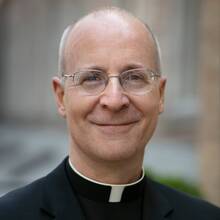
Jack McLain, a zombie and comic-book fan (and Jesuit priest) writes in this week's online Culture section...
Zombies are all the rage. They can be found in reworkings of classic books and games in Apple’s App Store. They have even spawned a new kind of protest movement that involves large crowds dressing up as zombies and besieging the targets of their discontent. And of course zombies still appear in the medium responsible for their popularization, film.
Zombies are the Everyman of the monster world. In contrast to the ennui-filled vampires of “Twilight,” or the erotic vampires of Anne Rice, zombies are anonymous, indistinguishable from one another. Other than the tatters of clothing that they wear, there is nothing to set one zombie apart from another. Unlike the werewolf, whose curse provides an in-built dramatic conflict (“Am I responsible for what I do in that state?”), zombies are remorseless and insensate. And unlike Mary Shelly’s Frankenstein and Creature, zombies do not serve as a metaphor for human ambition or hubris. The origin of zombie plagues is rarely explained in the genre; they simply begin. Somewhere the virus is born and it spreads until the whole world must confront it.
Zombies are the faceless, unsexy, plodders of the horror genre. There is even a debate among zombie-followers about the pace at which zombies should move. Should they move at an undead shamble or with leopard like agility in consuming their unfortunates? I prefer a slow-moving zombie to the fast-moving variety; they’re scarier when they’re slow because even though you can out-maneuver them in the short term, they just keep coming for you. Eventually, it isn’t their speed that overwhelms, it is their mass. One zombie is little threat, one thousand are.
Zombies are hungry, possessing a ravening, insatiable need to feed. And what they seek to consume is us, you and I. This irrational desire to devour has been used as metaphor for human consumption writ large. George A. Romero, the godfather of the genre who first popularized zombies in his classic “Night of the Living Dead,” used zombies as a metaphor for consumerism in his follow up to that film, “Dawn of the Dead.” Survivors of zombie plague seek refuge in a shopping mall and turn it into a Fort Apache-style sanctuary.
As a fan of the horror genre, I’ve seen most of the movies and read a fair number of books and comics based on these undead uprisings. Generally, they are simply diversions. A zombie movie is the film equivalent of cotton candy, not much mental nutritional value, but when done well, oh so sweet. But the zombie movement has more to say about Western culture than you might expect.







